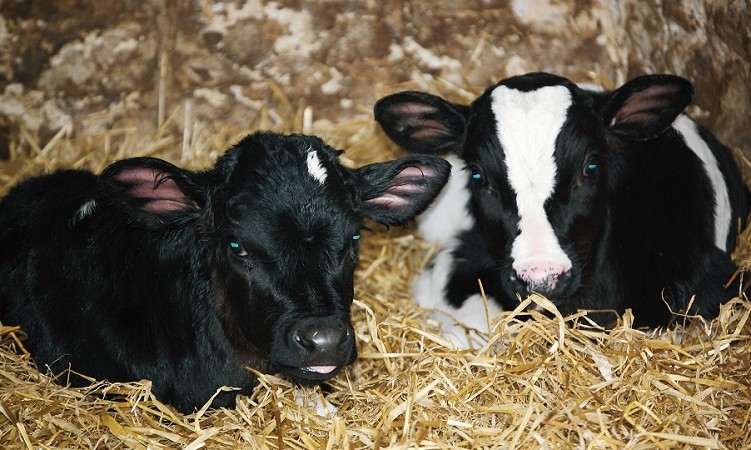

Calves less than 3 weeks old are more likely to experience cold stress at temperatures below 59 degrees F. For example, the lower critical temperature for calves from birth to 7 days of age is 55 degrees. For older calves, the lower critical temperature is 32 degrees. A normal body temperature for a calf is around 101.5 degrees, though that can vary a degree or two depending on the time of day.
To maintain this body temperature in the cold weather, a calf must consume more energy, and the environment must be managed to minimize the increase in their maintenance requirements. Ideally, both strategies will be implemented. We shall focus on managing the environment, in particular, the use of bedding.
One of the best practices to follow is using proper bedding, as this should provide adequate thermal insulation. According to research, body heat from a calf is retained in air pockets of straw bedding, which helps to reduce heat loss to the environment when the calf is lying down. Straw bedding should be dry and added frequently. Other types of bedding can be used in warmer months, but straw is best for the cold.
How do you know if a calf has adequate bedding? So research was made and below are the findings they got
A nesting score of 1 means no bedding covers any part of the foot or leg. This is fine in the heat, but not in the cold seasons. A nesting score of 2 means part of the leg is visible while the other part is covered by bedding. Most of the time the lower part of the leg is covered. A nesting score of 3 means a calf can nestle in the bedding and cover all the way up the legs, so the entire leg is covered. This is what you want for your calves in the cold. Straw bedding or long-stemmed hay is the only way to accomplish this score.
 Contact Jaguza Support
Contact Jaguza Support